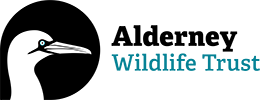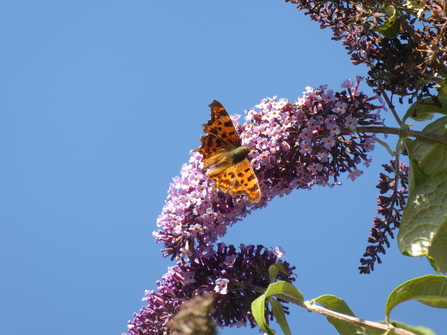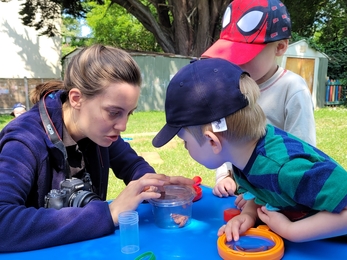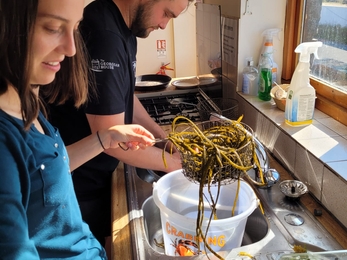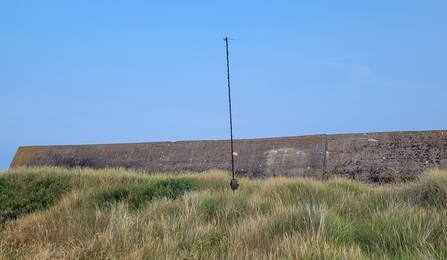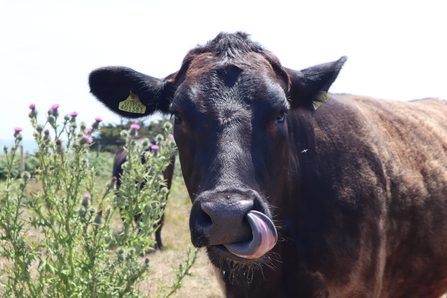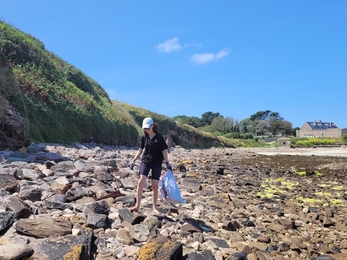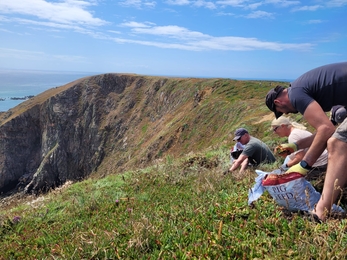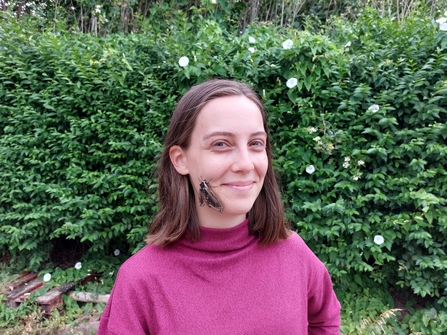
Alderney was completely unknown to me until a few months ago. Ever since I heard about it, I have been meaning to visit, and what better way to discover a new place than by volunteering for a local organisation? Being on a rather busy gap year after completing my Master’s in Development Studies, I only had a month to dedicate to the Alderney Wildlife Trust, but these four weeks have been full to the brim with a variety of activities!
From my very first day, I was warmly welcomed by Roland, the CEO of the AWT, and the whole team. I did not have precise expectations but was keen to learn about the local wildlife, and I was not disappointed! Two “WeBS” (the Wetland Bird Survey that happens monthly across the UK) took place during my stay, giving me a great opportunity to learn about the species present around Alderney. I accompanied the AWT Ramsar Officer and Ecologist, Alex and Matt, around the island, doing a census of the bird species interacting with the seaside environment. I also observed nesting Ringed Plovers on the north-western coast of Alderney to determine their “productivity”, i.e. the number of chicks that fledge, and I had the chance to see three tiny Plover chicks. While they look adorable, what makes this sighting especially exciting is that Alderney is the only regular breeding location for these birds in the Channel Islands.
